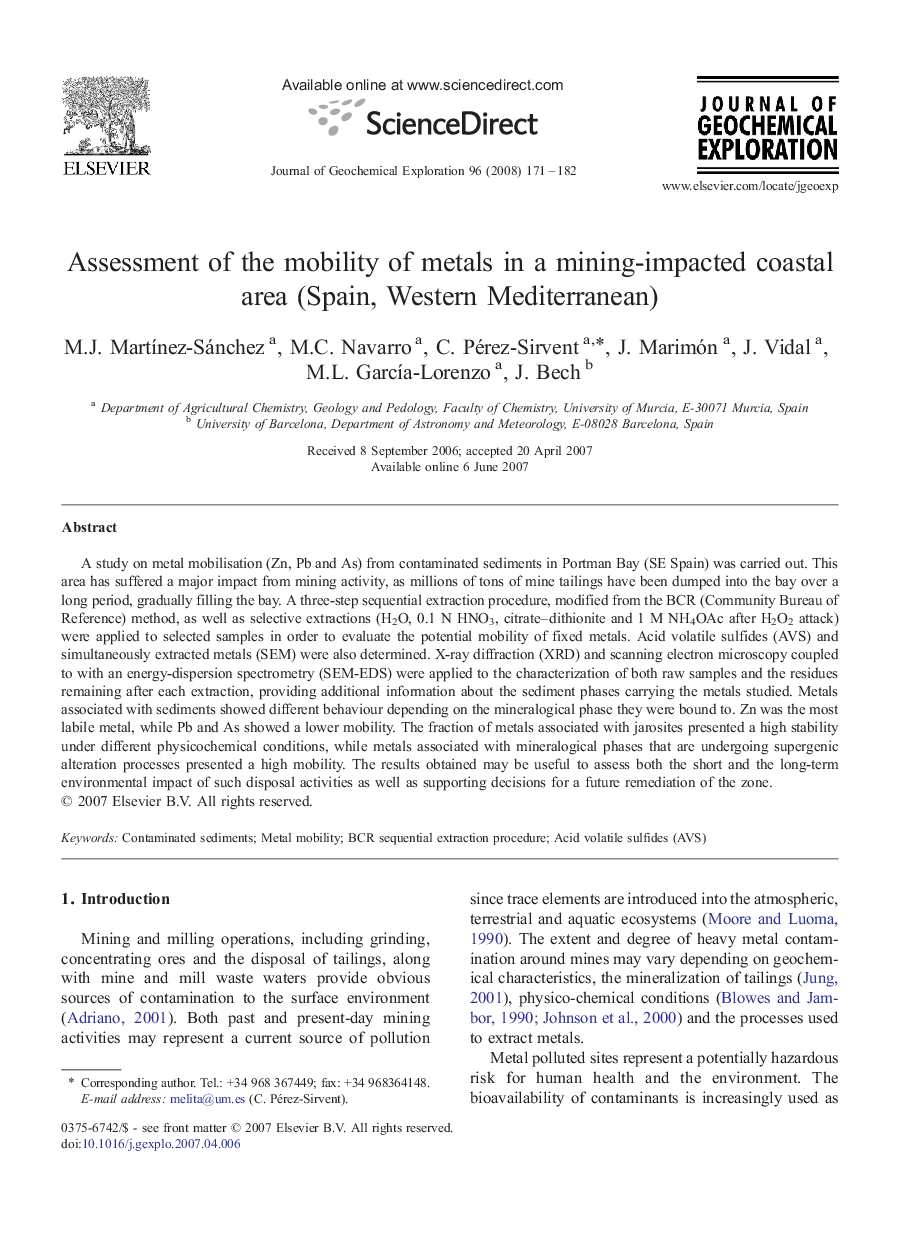| Article ID | Journal | Published Year | Pages | File Type |
|---|---|---|---|---|
| 4458303 | Journal of Geochemical Exploration | 2008 | 12 Pages |
A study on metal mobilisation (Zn, Pb and As) from contaminated sediments in Portman Bay (SE Spain) was carried out. This area has suffered a major impact from mining activity, as millions of tons of mine tailings have been dumped into the bay over a long period, gradually filling the bay. A three-step sequential extraction procedure, modified from the BCR (Community Bureau of Reference) method, as well as selective extractions (H2O, 0.1 N HNO3, citrate–dithionite and 1 M NH4OAc after H2O2 attack) were applied to selected samples in order to evaluate the potential mobility of fixed metals. Acid volatile sulfides (AVS) and simultaneously extracted metals (SEM) were also determined. X-ray diffraction (XRD) and scanning electron microscopy coupled to with an energy-dispersion spectrometry (SEM-EDS) were applied to the characterization of both raw samples and the residues remaining after each extraction, providing additional information about the sediment phases carrying the metals studied. Metals associated with sediments showed different behaviour depending on the mineralogical phase they were bound to. Zn was the most labile metal, while Pb and As showed a lower mobility. The fraction of metals associated with jarosites presented a high stability under different physicochemical conditions, while metals associated with mineralogical phases that are undergoing supergenic alteration processes presented a high mobility. The results obtained may be useful to assess both the short and the long-term environmental impact of such disposal activities as well as supporting decisions for a future remediation of the zone.
